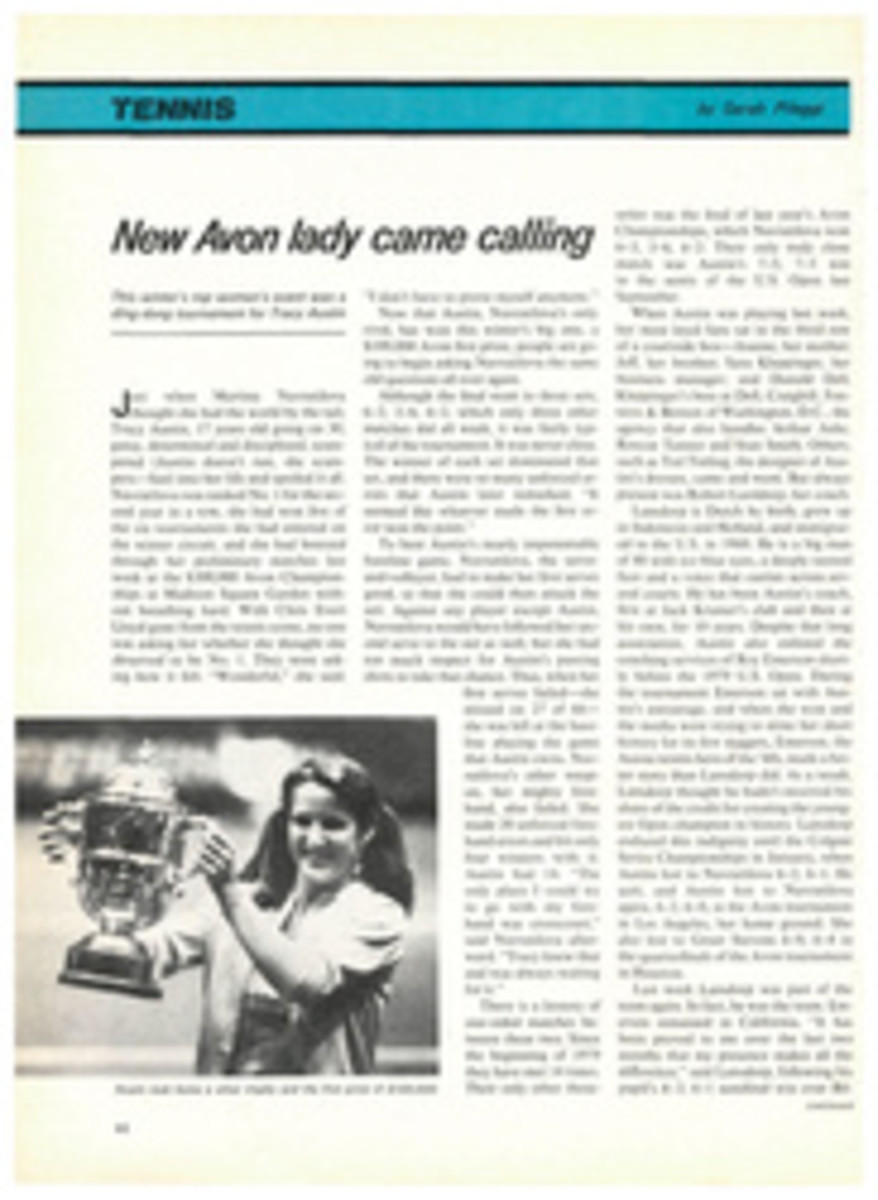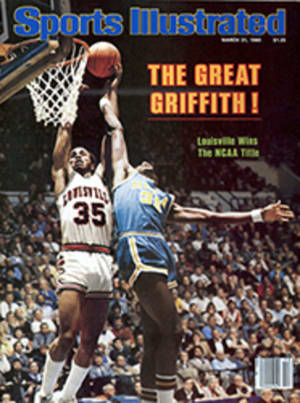
A modified American plan
Paul Cannell, an English forward now with the Memphis Rogues, was sitting in the bar of the Bay Harbor Inn in Tampa one recent evening. The Rogues were in spring training, and Cannell, who is famed for dropping his shorts when referees make calls against him, as well as for his amazing ability to head the ball, was pondering the future of the league.
"I give the NASL two years," he said. "You can't say that soccer's arrived anymore. It's here. But you can't claim that it's a major sport either. It's on some sort of plateau, and if it doesn't get up and dance this time I don't think the public will stay interested. It needs something new and fresh."
He drank deeply, sighed and reordered, wondering just what that something could be. Finally his eyes lit up. "Elephants!" he exclaimed. "Pageants! The Village People!" Overcome with his vision and grinning maniacally, Cannell lunged across an empty stool and bit a Yugoslavian teammate on the ear. The Yugoslav said "ouch" and other things in Croatian.
"Ah, you don't play soccer with your ear," Cannell told him.
Across town Tony Field, a gracefully aging English forward who also plays for Memphis, sat quietly watching a midget fiddler in a country and western band. "This whole thing reminds me of the NASL," he said. "Somebody too small trying to play too fast."
Ready to launch its 14th season next Saturday, the NASL again seems poised for moderate success. Its 24 franchises are relatively stable, and attendance increased by 8% in 1979. There are no expansion, relocated or failed teams to cloud the prospects for this season. ABC this year will televise six games (this is a pro-rata decline as the league will play 32 games this year vs. 30 last season), plus one playoff game and the Soccer Bowl, the NASL championship game. "Stability and steady growth will characterize the league this year," says NASL Commissioner Phil Woosnam.
Fine. But where are the elephants? Some of the glitter, some of the madness that made the league colorful as it battled for a toehold on the pro sports scene seems gone. It's almost as if NASL players are getting ready to imitate their betters in the NFL by arriving in locker rooms wearing three-piece suits and carrying attachè cases. But hold on, chaps. Your league still must face—and overcome—a number of tough challenges before it can declare itself to be a gilt-edged success.
Foremost, says Johan Cruyff, is the question of Americanization. Cruyff is a Dutchman, the world's No. 1 soccer player, who came to the Los Angeles Aztecs at midseason last year, doubled the gate there and won the league's MVP award. "It angered the owners and the general managers when I told them at the MVP ceremony that the NASL is failing to Americanize the game," he says. "They won't have farm clubs or reserve-team schedules. As a cost-cutting move, some colleges are reducing their schedules. Pretty soon no one will be able to afford foreigners. If you bring up your own talent, you don't pay transfer fees. And, besides, in a few years who's going to come and see old stars like me play?"
The 32-year-old Cruyff found himself on the block last month when the new Mexican owners of the Aztecs refused to honor the second season of his high-priced two-year contract. Cruyff was unloaded to Washington, the Gulf + Western-backed Diplomats reportedly having paid almost one million to the Aztecs and having given Cruyff a three-year, $1.5 million contract. Hailed a year ago as the savior of Los Angeles and the six other West Coast franchises, Cruyff's job now is to save soccer in the nation's capital.
The Americanization issue centers on the league's new rule requiring that three North Americans—either Canadian or U.S. citizens—be on the field at all times. Last year the number was two. In 1979, four North Americans had to be dressed for each game; this year the number will be six—or an increase of 48 league-wide. If nothing else, a lot more U.S. or Canadian players will be collecting salaries and splinters while they sit on the bench.
"It's the year of the North American player," says Freddie Goodwin, president of the Minnesota Kicks. "But we can't move it along too fast or we'll lose quality. However, I think when owners and coaches see the quality of the native players this season, they'll not be so afraid."
Three weeks ago, as reporters gathered in the Cosmos' Giants Stadium dressing room before the team departed on a preseason tour of South America, Italian-born striker Giorgio Chinaglia counted media heads. Across the aisle from his locker was Rick Davis, the best North American-born player in the game today. In the past, most reporters crowded around Chinaglia to hear his pronouncements on the Cosmos. This day there were more notebooks, pencils and tape recorders around Davis. Chinaglia went into a Cosmic pout—one silent vote against Americanization. The irony is that Chinaglia is a naturalized American.
Through trades the Cosmos wound up with four of the league's top nine draft choices, including the top pick, Don Ebert of NCAA-champion Southern Illinois University-Edwardsville. They also acquired last year's No. 3 and No. 5 picks, Larry Hulcer of St. Louis University and Angelo DiBernardo of Indiana, plus 1979 All-Star defender Bruce Wilson from Chicago. But most teams have scrambled for lesser Americans in a maze of drafts and trades even a commodities broker couldn't untangle. The rush to stockpile experienced, solid native players has driven prices sky-high.
Says player agency executive Dick Luppi, "Last season an American with two or three years' experience in the league got $18,000 or so. This season, with the third-man rule, the same player can command $40,000."
Jim McAlister, a three-year veteran and 1977 rookie of the year for his hometown Seattle Sounders, was dealt this winter to Toronto. In response to feelers, the Blizzard reportedly set a price of $200,000 for McAlister, a record for a U.S. player.
While NASL squads have enough North Americans to choose from to fill out their rosters, the choice of the third starter for teams like Detroit, Houston, San Diego, 1979 Soccer Bowl runner-up Tampa Bay and a host of others will be a difficult one. For many, the third North American slot will be rotated until the right man can be found.
But there are signs of growing faith in American players. As recently as two years ago most clubs had a North American goalkeeper, that being the position on a team of skilled Europeans at which a North American could do the least damage. "A goalkeeper and an outside defender—that's the way it used to be," says U.S. Olympic and National Team Coach Walt Chyzowych, "but with three on the field, I think we'll see more American midfielders." Confidence in native-born players has increased enough so that many teams now have gone for English or Continental goalies who are better at handling the crossing ball in the air.
With fewer than a dozen foreign loan players in the league this season, most rosters have remained relatively stable. A notable exception is the 1979 Soccer Bowl champion Vancouver Whitecaps, who are not quite ready to pay the price of success. English Goalie Phil Parkes, who had the best goals-against record in the NASL last season, this year demanded a three-year contract including $880,000 in salary, a new car and three trips to England each season. He was sold to Chicago. A few more English players also made what Vancouver Team Manager Tony Waiters considered unreasonable demands. "I can go to England and get six guys just as good as you for half what you're asking," he reportedly told them. And he got his new players, worth as yet undetermined.
The Portland Timbers estimate that they will spend three times what they did last year on players, reflecting a league average. Perhaps more significant, they have a new general manager, Peter Warner, an English Methodist minister who left his pulpit for the job. "I won't take unfair advantage of the league," he says. "I'll pray only as a last resort."
Washington Coach Gordon Bradley, a former Cosmos pilot who was dismissed after benching Chinaglia three seasons ago, guided his team to a 19-11 record last season. With the addition of Cruyff and another Dutchman, Wim Jansen, a solid midfielder who played on the Netherlands' 1974 and '78 World Cup entries, the Diplomats have the makings of a team capable of upsetting the Cosmos. But after his stint in New York, Bradley is in no haste to assemble a world-class bench. "We don't want a team of superstars," he says. "It doesn't work."
The Cosmos, however, remain the Cosmos. When the German season ends in June, Hennes Weisweiler will assume command of the least coachable squad in pro sports. Despite an oversupply of egotists, the Cosmos should play more brilliantly than ever. Not only on they have the core of the club that went 24-6 in 1979 and the best of the young Americans, but they also have obtained the services of two classy young South Americans—Jose Oscar Bernardi of Brazil and Julio Cesar Romero of Paraguay.
One sign that a sport feels it has arrived is when it starts thinking about a Hall of Fame, as the NASL is currently doing. It would also induct stars of the rival American Soccer League and the NCAA. It probably won't be as big as the Halls at Cooperstown or Canton, but the New Jersey Sports & Exposition Authority, operator of Giants Stadium, has already commissioned architects to come up with designs.
One can imagine some of the exhibits. In the Hall of Saviors would be busts of Pelè, Beckenbauer and Cruyff, plus the NASL press releases proclaiming that each of them would snatch the sport from the jaws of invisibility.
Another display would surely be Chinaglia's U.S. citizenship papers, with which he began the trend toward naturalization that's helping foreigners beat the Americanization rule. At least a dozen foreign players are now in the process of becoming U.S. citizens.
In the corner of Bush Productions would be last season's Philadelphia Fury media guide, which was published in time for the team's last home game.
The Lost For Words Exhibit would include the text of Edmonton Drillers' owner Peter Pocklington's speech last summer announcing, "The Drillers are a proud new entry into the NASL and are proud to compete for the...." Pocklington had no idea what his team was competing for. But as the owner of an NHL franchise, he knew it wasn't the Stanley Cup.
In the History of the Game section there would be a diorama depicting what happened when the St. Louis Stars' Pat McBride was suddenly smitten by an airport security person. Unable to attract her attention away from the X-ray screen she was watching, McBride quietly slipped onto the moving belt into the machine, scaring the attendant half to death when she saw a human skeleton on the screen. As he emerged on the other side, he whispered, "I love you."
And, given the toehold the NASL has on the American sports scene, it would be appropriate if over the door of the Hall of Fame were carved the memorable words of Edmonton Coach Hans Kraay when he faced reporters after his 8-22 season last summer: "Don't shoot me, boys, I'm playing the piano as fast as I can."
But where are the elephants?
ILLUSTRATION
When it comes to circumventing the intent of the new three-man rule, naturalization is a natural.
ILLUSTRATION
Stockpiled Americans are prime trading material.

